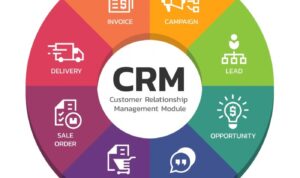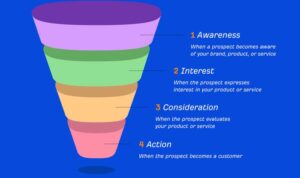Kicking off with Developing a Podcast Marketing Strategy, this opening paragraph is designed to captivate and engage the readers, setting the tone american high school hip style that unfolds with each word.
If you’re looking to take your brand to the next level, podcast marketing is the way to go. In this guide, we’ll dive into the key aspects of developing a successful podcast marketing strategy that will help you connect with your audience and boost your brand’s visibility.
Understanding the Podcast Market: Developing A Podcast Marketing Strategy

In today’s digital age, podcasts have become increasingly popular, with more and more people tuning in to listen to their favorite shows on the go.
Current Trends in Podcast Consumption
- Podcast listenership has been steadily growing, with over 100 million Americans tuning in regularly.
- The rise of smartphones and smart speakers has made it easier for people to access podcasts anytime, anywhere.
- Popular streaming platforms like Spotify and Apple Podcasts have made it convenient for users to discover and subscribe to new shows.
Key Demographics that Listen to Podcasts
- Millennials and Gen Z are among the top demographics that listen to podcasts, with a high percentage of them tuning in weekly.
- Commuters and professionals who are on the go tend to be avid podcast listeners, as they can consume content while multitasking.
- Listeners who are interested in niche topics or specific industries often turn to podcasts for in-depth discussions and insights.
Benefits of Podcast Marketing Over Traditional Channels
- Podcast marketing allows for a more targeted approach, reaching audiences who are already interested in the content being discussed.
- Podcasts offer a more intimate and personal connection with listeners, as hosts can engage with their audience in a conversational manner.
- Unlike traditional marketing channels, podcast ads are less intrusive and can be seamlessly integrated into the content, leading to higher engagement and retention rates.
Setting Objectives for Podcast Marketing
When it comes to setting objectives for podcast marketing, it’s crucial to have specific goals in mind that align with the overall marketing strategy of the brand. These objectives serve as a roadmap to guide your efforts and measure the success of your podcast marketing initiatives. By defining clear objectives, you can focus on what truly matters and track your progress along the way.
Defining Specific Goals
- Increase brand awareness: One of the key objectives for podcast marketing is to enhance brand visibility and recognition among the target audience.
- Generate leads and conversions: Another goal is to drive leads and conversions by promoting products or services through the podcast.
- Build customer loyalty: Creating engaging content on the podcast can help foster stronger relationships with existing customers and build loyalty.
Alignment with Overall Marketing Strategy
These objectives align with the overall marketing strategy of the brand by contributing to the broader goals of increasing market share, driving revenue growth, and enhancing customer engagement. By integrating podcast marketing with other marketing channels, brands can create a cohesive and comprehensive approach to reaching their target audience.
Measurable KPIs for Tracking Success
- Number of downloads: Tracking the number of downloads per episode can indicate the reach and popularity of the podcast.
- Listener engagement: Monitoring metrics such as listener retention rate, average listen duration, and listener feedback can provide insights into audience engagement.
- Conversion rates: Measuring the conversion rates from podcast listeners to customers can help assess the effectiveness of the podcast in driving conversions.
Target Audience Analysis

When developing a podcast marketing strategy, it is crucial to identify and understand your target audience. By knowing who you are trying to reach, you can tailor your content to meet their specific needs and preferences. This will not only help you attract more listeners but also keep them engaged and coming back for more.
Identifying the Target Audience
- Start by researching demographics such as age, gender, location, and interests of your potential listeners.
- Use social media analytics, surveys, and feedback to gather information about your current audience.
- Look at similar podcasts and analyze their audience to get insights into who might be interested in your content.
Tailoring Content for the Audience
- Create episodes that address topics and themes that resonate with your target audience.
- Use language and tone that appeals to your listeners and aligns with their preferences.
- Invite guests or experts that your audience would find interesting or valuable.
Engaging and Growing the Audience
- Promote your podcast on social media platforms where your target audience is most active.
- Encourage listeners to share episodes with their friends and networks to expand your reach.
- Interact with your audience through comments, messages, and polls to build a community around your podcast.
Content Planning and Creation
Creating high-quality content is crucial in podcast marketing as it is the main factor that attracts and retains listeners. Engaging and valuable content can help build a loyal audience and establish credibility in the podcasting industry.
Importance of High-Quality Content
Quality content not only keeps listeners coming back for more but also helps in growing your listener base. It differentiates your podcast from others and showcases your expertise on the topic. Consistent high-quality content can also improve your podcast’s ranking in search results and increase visibility.
- Research your topic thoroughly to provide accurate and valuable information to your audience.
- Plan your episodes with a clear structure and flow to keep listeners engaged.
- Use storytelling techniques to captivate your audience and make your content more relatable.
- Include guest interviews or collaborations to bring diverse perspectives and insights to your podcast.
Different Formats and Styles for Podcast Content
There are various formats and styles you can use to create engaging podcast content. Some popular options include:
- Interviews: Conducting interviews with experts or influencers in your industry can provide valuable insights and attract a wider audience.
- Solo Episodes: Sharing your thoughts, experiences, and expertise in solo episodes can help in building a personal connection with your listeners.
- Storytelling: Narrating stories or sharing anecdotes related to your topic can make your content more engaging and memorable.
- Roundtable Discussions: Hosting discussions with a group of experts or enthusiasts can offer different perspectives and create dynamic conversations.
Tips for Creating Engaging Podcast Episodes
To create engaging and valuable podcast episodes, consider the following tips:
- Know your audience and tailor your content to meet their interests and needs.
- Keep your episodes concise and focused to maintain listener attention.
- Add variety to your content by incorporating different segments, such as Q&A sessions, listener feedback, or bonus content.
- Use high-quality audio equipment and editing techniques to ensure a professional sound quality.
Promoting the Podcast
To ensure your podcast reaches a wider audience, it’s crucial to focus on promoting it effectively. This involves utilizing various channels, leveraging social media platforms, and engaging in collaborations for cross-promotions.
Various Channels for Promoting a Podcast, Developing a Podcast Marketing Strategy
- Utilize podcast directories like Apple Podcasts, Spotify, and Google Podcasts to increase visibility and reach new listeners.
- Guest appearances on other podcasts can help introduce your podcast to a different audience and attract new subscribers.
- Creating teaser clips or trailers to share on social media platforms can generate interest and drive traffic to your podcast.
- Collaborating with influencers or industry experts can help promote your podcast to their followers and expand your reach.
Strategies for Leveraging Social Media
- Regularly post about new episodes, behind-the-scenes content, and engaging visuals to keep your audience excited and informed.
- Run targeted ads on platforms like Facebook, Instagram, and Twitter to reach specific demographics interested in your podcast’s niche.
- Engage with your listeners by responding to comments, conducting Q&A sessions, and hosting live discussions to build a community around your podcast.
Importance of Collaborations and Cross-Promotions
- Partnering with other podcasters for cross-promotions can introduce your show to their audience and vice versa, creating a mutually beneficial relationship.
- Collaborating with brands or businesses relevant to your podcast’s theme can result in sponsorships, giveaways, or promotional opportunities that help increase visibility.
- Joining podcast networks or communities can provide access to a larger audience and opportunities for joint marketing efforts to promote your podcast effectively.





